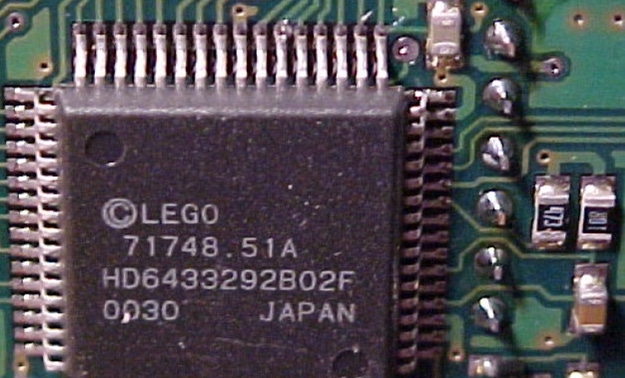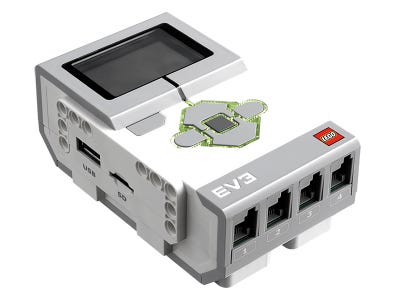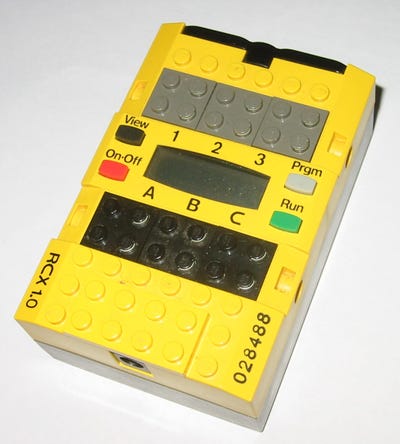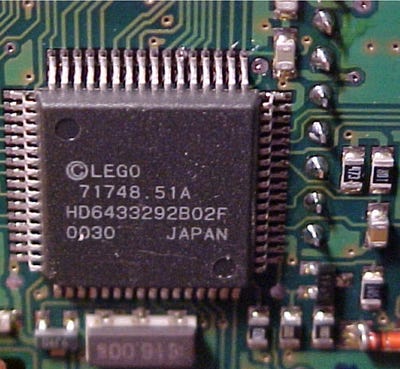Lego's consumer-based programmable controller is capable of creating a variety of smart real-world products.
February 12, 2021

Lego's Mindstorms kit concept was based on the constructionism learning theory (CLT) created by the late Seymour Papert. Papert’s work was inspired by Jean Piaget’s constructivist theory. Jean Piaget is also credited with being the father of child psychology. In practicing CLT, learners construct new knowledge through the creation of tangible real-world products. There have been several versions of the Mindstorms Robotics Invention System (RIS) including the EV3. With Papert’s CLT concepts, Lego developed a consumer-based programmable controller capable of creating a variety of smart real-world products. What started Lego’s revolution into the educational technology market was the Robot Command Explorer or RCX programmable controller.

RCX Physical Package
The RCX is a programmable controller packaged with a variety of electronic technologies. The physical size of the RCX is 95mm (3 ¾ inches) x 63mm (2 ½ inches) x 40mm (1 ½ inch). The RCX weighs 250g (0.55lbs). Powering the RCX requires six AA batteries which is equivalent to 9VDC. There is also a barrel connector mounted on the opposite side of the RCX’s infrared (IR) detector which allows the unit to be powered from a 9VDC wall adapter. Also, the RCX can support traditional Lego bricks as well as a variety of electronic sensors such as touch, light, and rotation devices.

Besides the small form factor, the RCX was designed with sophisticated electronics technology at the time of its consumer market introduction of September 1998.
RCX Electronics Technologies
At the core of the Lego RCX was an 8-Bit microcontroller developed by Hitachi Ltd. The Hitachi H8/3297 microcontroller was a series of flat-pack (FP) 64 pin 8-Bit microcontrollers capable of operating at a clock frequency of 10 Megahertz (MHz). The main central processor unit (CPU) deployed by Hitachi in the family of H8/3297microcontroller was its H8/300 device. The H8/300 is a high-speed CPU that uses a bit manipulation instruction set as the main software computing architecture.
Lego generated its own part number for design development and inventory management which was the HD6433292B02F. In addition to a high-speed processor, the H8/3297 microcontroller includes read-only memory (ROM), random access memory (RAM), three timers, a serial communication interface (SCI), an analog to digital (A/D) converter, and input-output (I/O) pins. The three packaged timers consisted of a 16-bit free-running timer, an 8-bit timer, and a watchdog timer.

In addition to the microcontroller, the RCX has three motor ports labeled A, B, and C. To operate each Lego DC electric motor attached to its respective port, a 16pin motor driver small outline integrated circuit (SOIC) controls the electromechanical component. The motor driver IC manufactured by Melexis uses an H-Bridge configuration for operating the attached motor’s speed and direction. To adjust the motor speed was accomplished by the H9/3297 microcontroller providing a pulse-width modulation (PWM) signal to the Melexis motor driver IC. The output voltage provided across the attached LEGO DC electric motor’s windings is 9VDC. For each motor port, there is an individual wired Melexis motor driver IC.

As with most retro-electronics, there exists an active community of makers, hobbyists, and engineers that find new ways to use pre-dated technology. Modifications or “mods” are the traditional approach used by makers, hobbyists, and engineers to revive the Lego RCX. One such RCX mod consists of allowing a standard 9V battery to power the programmable controller. With such a mod, the cost of purchasing 6 AA batteries can be reduced to one 9VDC battery. To find additional details on the Lego RCX software and hardware specifications, the following website may be referenced here.

Don Wilcher is an electrical engineer, technical education researcher, instructor, maker, and author. He researches machine learning and artificial intelligence applications and their impact on personalized learning, competency-based-models curriculum, and instructional development in the fields of mechatronics, automation, electronics, and industrial maintenance technologies.
About the Author(s)
You May Also Like





